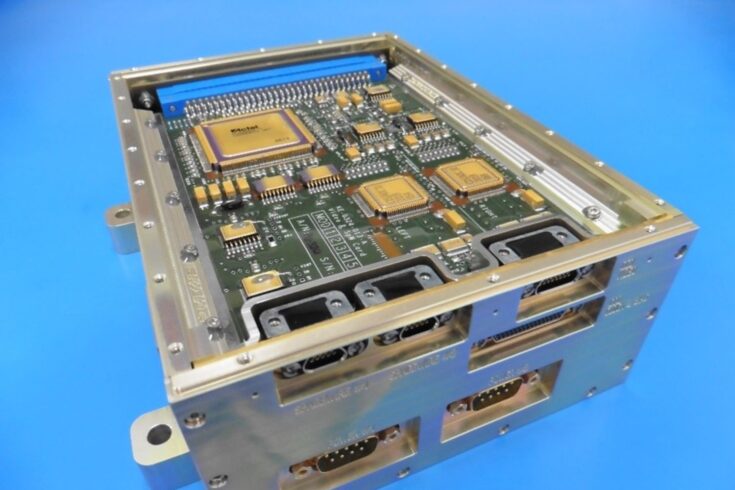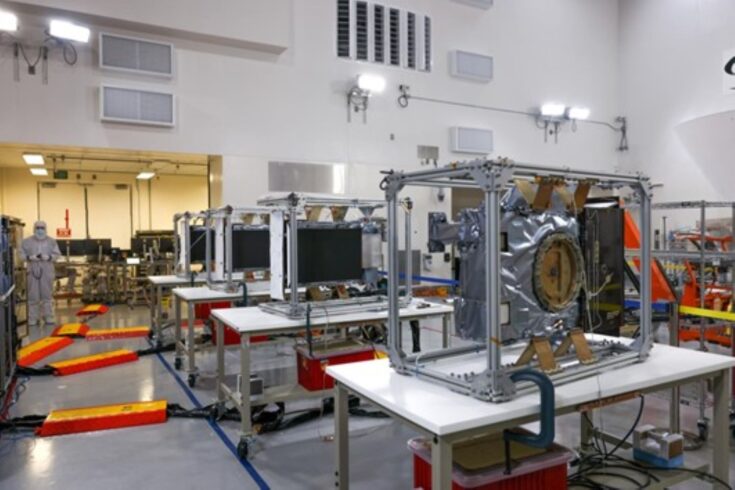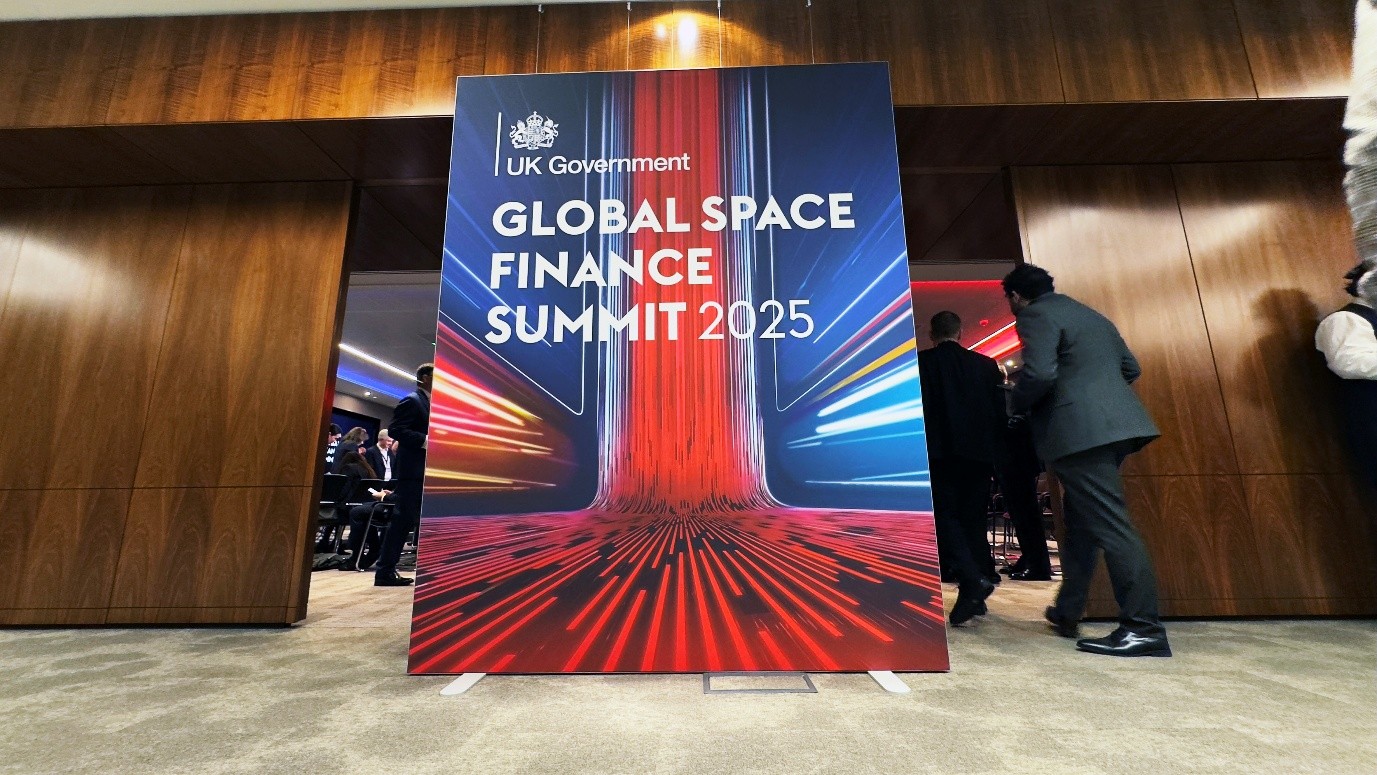UK-built camera systems pack a PUNCH on NASA's Sun mission

Image courtesy NASA
While space weather is usually harmless, producing the beautiful displays of the Northern and Southern Lights, severe solar storms can interfere with aspects of everyday life.
They can interfere with GPS systems, power grids and vital global communications on Earth. It is critical that scientists continue to develop understanding of solar phenomena so we can enhance our resilience to their potential impacts.
A new NASA mission featuring UK built technology is targeted to launch no earlier than today at 3:09am UK time. The mission will explore how the Sun’s outer atmosphere, the solar wind, evolves as it expands outwards from the corona into the heliosphere, a vast bubble of charged particles that stretches far beyond Pluto’s orbit.
Selected by NASA from five proposals in 2019, the Polarimeter to Unify the Corona and Heliosphere (PUNCH) mission will use four spacecraft to build 3D maps of the solar wind structure. The mission will contribute to efforts improving space weather forecasting.
Led by the Southwest Research Institute (SwRI) in the US, the PUNCH consortium brings together world-leading expertise, including from UK-based teams at the Science and Technology Facilities Council (STFC).
UK camera systems packing a punch
Scientists, engineers and technicians at STFC’s RAL Space have been instrumental in the development of the four suitcase-sized PUNCH satellites.
As well as contributing to the mission’s scientific goals, RAL Space teams have designed, developed and manufactured the systems for four visible-light cameras that will capture a new perspective of the evolving solar wind.
Once the spacecraft are in orbit, the team at RAL Space will also enact their role as the mission’s in-flight calibration lead. Maximum science return from the mission relies on the combination of data from its four satellites, so ensuring accurate calibration is paramount.
Dr Jackie Davies, UK Science Lead for PUNCH at STFC RAL Space, said: "The PUNCH design builds on RAL Space’s extensive heritage in leading, and contributing to, solar and solar wind imaging instruments, including our contributions to NASA’s Solar Terrestrial Relations Observatory (STEREO) mission. We’re thrilled to be working alongside SwRI, NASA and the US Naval Research Laboratory on this pioneering project and can’t wait to see what new insights our technological and scientific input will reveal in the coming months.

Above: One of the camera electronics engineering models being finalised at RAL Space.
Courtesy STFC RAL Space
Cutting edge technology to track solar wind
Three of the four spacecraft will carry wide field imagers to track the solar wind as it moves away from the sun, while the fourth will feature a narrow field imager to continuously image the corona. Each imager will be equipped with a camera with electronics systems developed by RAL Space.
This technique will allow scientists to make a 3D map of features throughout the inner solar system, enabling them to determine the trajectory and speed of coronal mass ejections, bursts of solar plasma that can disrupt technology on Earth.

Above: Close up of one of the camera electronics boxes.
Courtesy STFC
Radiation-resistant technology
PUNCH’s imaging systems also incorporate specialised radiation-resistant chips designed by STFC’s Technology Department. Based on chips originally developed for STEREO, these components represent a major advance in space technology.
Unlike commercial off-the-shelf electronics, the structure of these chips is designed for the harsh conditions of space, immunising them against the typical electronic faults caused by cosmic radiation. This resistance to radiation will extend the mission’s lifespan and improve data quality.
Countdown to launch
Polarimeter to Unify the Corona and Heliosphere (PUNCH) is scheduled to launch no earlier than today (3rd March 2025) at 3:09am UK time, from Vandenberg Space Force Base, California, on a SpaceX Falcon 9 rocket. It will share its ride to space with the Spectro-Photometer for the History of the Universe, Epoch of Reionisation and Ices Explorer (SPHEREx), another new NASA observatory.

Above: Crews conduct a solar array deployment test on the spacecraft of NASA’s PUNCH satellites at Astrotech Space Operations on Vandenberg Space Force Base, California, 21st January 2025.
Courtesy USSF 30th Space Wing, Alex Vadez
Dr Nick Waltham, Technology Research and Innovation Theme Lead at RAL Space said: "Developing and testing the PUNCH camera systems has been an exciting endeavour for our team, made even more meaningful by the additional challenges we overcame during the COVID pandemic.
"This achievement is the result of years of dedication – building on a much longer heritage in similar missions – and the whole team should be incredibly proud as we prepare for launch. Their work will play a key role in advancing our understanding of this crucial area of space science."









